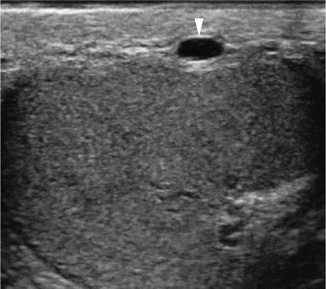Tunica albuginea cysts are fluid-filled sacs that form within the tunica albuginea, the tissue layer that surrounds the testicular area. These cysts are normally benign and noncancerous, but if they are left untreated, they can be uncomfortable and even harmful. It is essential to diagnose tunica albuginea cysts in order to determine their size, location, and effect on testicular function. Ultrasound imaging is one of the main diagnostic technologies employed in this process.
What is Tunica Albuginea Cyst?
Tunica Albuginea cysts are fluid-filled sacs that form inside the tunica albuginea, the fibrous sheath that covers the corpora cavernosa of the penile region. This issue primarily affects men and can cause discomfort and concern about sexual health. While the specific cause of Tunica Albuginea Cysts is unknown, several variables are thought to contribute to their formation.
Tunica Albuginea Cysts Symptoms
Tunica Albuginea Cysts can cause a variety of symptoms. They might consist of:
- A palpable lump or growth in the penile area
- Pain or discomfort during sexual activity
- Erectile dysfunction, or difficulties achieving and keeping an erection
- Penile curvature (rare)

Tunica Albuginea Cysts Causes
The precise causes of Tunica Albuginea Cysts are unknown.
However, several elements are believed to be involved in their development. These consist of:
Trauma or injury to the penis
The chance of cyst formation can be increased by prior trauma or injury to the penile area.
Congenital predisposition
Some people can be genetically predisposed to getting tunica albuginea cysts.
Inflammation or infection
Cysts may form as a result of inflammatory reactions or infections in the penile area.
Tunica Albuginea Cysts Ultrasound
Ultrasound imaging is frequently used by clinicians to correctly diagnose Tunica Albuginea Cysts. The cysts can be seen during this non-invasive process, which also aids in pinpointing their size, location, and characteristics. In order to provide a precise diagnosis, ultrasound imaging also helps to differentiate cysts from other urological anomalies.
To improve sound wave transmission during the ultrasound process, the technician will apply a transparent gel to the testicular region. Following that, the transducer will be softly pushed over the scrotal area taking images on the monitor. To get the necessary views and measurements, the technician may use light pressure. The procedure normally takes 15-30 minutes, depending on the complexity of the situation.
Treatment Options for Tunica Albuginea Cysts
The course of treatment for Tunica Albuginea Cysts is determined by a number of elements, including the size, symptoms, and impact on a person's quality of life. There are various treatment options available, such as:
Observation and monitoring
If the cysts are small and asymptomatic, doctors can advise routine observation without treatment.
Medications
Certain drugs can help decrease symptoms linked with cysts, such as pain or discomfort.
Aspiration and drainage
In particular situations, cysts can be drained with a small needle, providing relief from discomfort.
Surgery
For larger or symptomatic cysts that do not respond to previous therapies, surgical excision of the cysts may be required.









0 Comments